Einstein needed Regge Poles and Bootstraps.
Regge poles and Bootstraps were two dominating issues in the early 1960s. Since I received my PhD degree in 1961, I had to learn these subjects. Einstein was not needed. I thought I was doing bootstraps, but I was never regarded as a "licensed by my fellow "bootstrapper." Yet, I am very happy to talk about the lasting impact made by this chapter of physics dominated by these two words, or more precisely by Geoffrey Chew.
- When quantum field theory was formulated, it was thought to be a
complete union of quantum mechanics and special relativity. It was against
the law to say there are problems QFT cannot solve. I still mess up the
lunch table with my colleagues if I say that QFT cannot produce the energy
spectrum of the hydrogen atom. Indeed, Geoffrey Chew had enough resources
to say openly about the limitations of field theory, and call for an
alternative approach.
Yes, quantum field theory is a brilliant theory, and we should speak the language of Feynman diagrams to explain every physical phenomenon. However, can Feynman diagrams address bound-state problems? The answer is no, not practical at least. This was also pointed out by Feynman in 1970.
- Geoffrey Chew sensed this earlier. In January of 1962, I heard Chew's talk at
the winter meeiting of the American Physical Society held in New York. You are
invited to my webpage telling how
exciting his talk was. He inspired many young physicists including myself. If you
were not there, you are invited to read his paper published in the July issue of the
Reviews of Modern
Physics.
The title of Chew's talk was "S-Matrix Theory of Strong Interactions without Elementary Particles." This paper contains a graph known today as the Chew-Frautchi plot. Chew then came to his belief that those non-elementary particles can be associated with bound-state poles of the complex plane of the S-matrix.
- Then how can you determine those pole positions? Chew then proposed the bootstrap
mechanism. These days, he is known as
the inventor of the bootstrap dynamics. In my opinion, he was also
an excellent traditional physicist. Did you know Elvis Presley was also an
excellent traditional
singer.
In his 1967 paper published in Physical Review Letters, Chew raises the issue of localization of his bootstrapped particles. In other words, he started worrying about whether his bound-state wave functions are localized. I like this paper, because I raised the localization issue earlier in connection with the neutron-proton mass difference calculation by Dashen and Frautschi. Click here for a detailed story.
Chew knew it was not possible (at least not practical) to use field theory to address bound state problems. In order to locate the positions of those poles, he proposed his bootstrap mechanism. He then questioned whether his bootstapism is consistent with the localization condition for bound states. In so doing, he located, although faintly, the Step 1 in the history table.
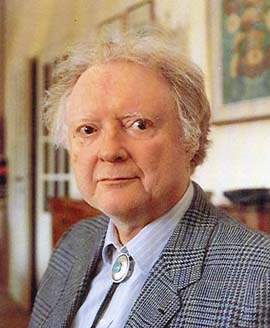
Tullio Regge, photo from the Marcel Grossmann Awards page. - Geoffrey Chew was inspired by Tullio Regge's paper on complex angular momentum.
Perhaps before Chew, I heard Tullio Regge's talk on complex angular momentum
in 1959. While Chew's program
was producing tons of papers every day, people asked Regge what his opinion
was on those papers, but he kept his reticence until 1974, seven years after
Chew published his last paper on bootstrapism in 1967.
In 1974, Hanson and Regge noted from the Chew-Frautchi plot that the internal orbital angular momentum could be proportional to the mass or (mass)2 of the composite particle. They then asked whether this concept is consistent with the rules of Einstein's special relativity. For this purpose, they attempted to construct a representation of the Poincare group using a rigid sphere. They were interested in constructing a representation according to Dirac's 1949 paper on Forms of Relativistic Dynamics.
In their paper, Hanson and Regge noted that the Poincare group has two Camisir operators, namely the mass and spin. Since they are two independent parameters, there must be at least one more independent parameter. But they did not see that the three-dimensional harmonic oscillator has both orbital and radial excitations, providing one additional degree of freedom. Using this possibility, I and my co-authors constructed the desired representation using harmonic oscillators. This work was published in the Journal of Mathematical Physics in 1979.
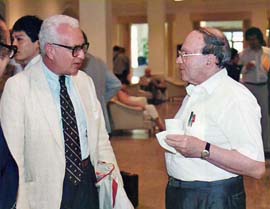
Murray Gell-Mann and Yuval Ne'eman (1988), photo by Y.S.Kim. - However, the constituents of those bound states are quarks, not Chew's bootstrapped
particles. While everybody, perhaps almost everybody, was watching what was going
on in Chew's research line in the early 1960s, Gell-Man and Ne'eman were working on
more fundamental particles. Initially they worried about two-dimensional distribution
of internal quantum numbers and came up with the SU(3) symmetry. In 1964, Gell-Mann
worried about the fundamental (simplest) representation of the SU(3) group, and came
up with his quark model. In 1979, Gell-Mann received the Nobel prize for this work.
It is interesting to note that none of their original papers were published in the Physical Review. Gell-Mann's original SU(3) paper was used to be quoted as Calif. Inst. of Tech. CSTL Report 20 (1961). Ne'eman's paper was published in Nuclear Physics 26 , 222 (1961). Gell-Mann's quark-model paper was published in the Physics Letters 13, 598 (1964). Thus, if you cannot publish your papers in the Physical Review, you may become ambitious. Here, I am not talking about myself. I have enough papers in the Phys. Rev. system.
Although Gell-mann invented the quark model, he was very careful not to mention binding forces which keep those quarks inside the hadron. But many nuclear physicists, who used to work on nuclear spectroscopy, jumped in and started using harmonic oscillators. Yet nobody was bold enough to say the Chew-Frautschi plot is a manifestation of the degeneracy of oscillators.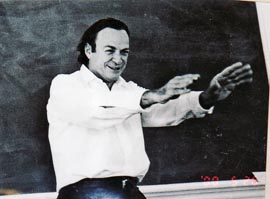
Richard Feynman, photo from Jadwin Hall of Princeton University. 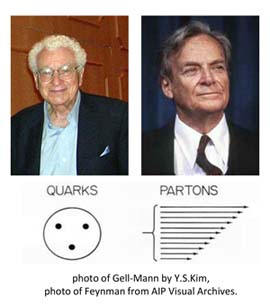
It was Richard Feynman who said this first at the APS spring meeting of 1970. He talked in the session for celebrating Gell-Mann's Nobel prize. I was there and took these photos of Feynman in his informal dress. If you were not there, you are invited to read the paper Feynman, Kislinger, and Ravndal, Physical Review D (1971). In his 1970 talk,
- Feynman combined Chew's approach and Gell-Mann's quark model into
one subject. Click
here for details, and
- he created many problems by writing down a beautiful differential equation, and giving wrong solutions to the equation.
I contend that I am the major beneficiary of this equation. It is indeed fun to fix up Feynman's wrong solutions, using my Wigner background. Perhaps the most exciting experience was to combine Gell-Mann's quark model and Feynman's parton model into one Lorentz-covariant entity.
I also contend that I am the major beneficiary of Chew's bootstrap program because he led me to locate the orange spot (Step 1) in Einstein's history table, given at the beginning of this webpage.
I know many people are complaining that I am talking about the same thing in all of my papers and conference presentations. Yes, I start with the same equation contained in Feynman's 1970 paper. Does this mean that all of my papers tell the same story? There are more than one million papers in classical mechanics, telling different stories. They all start from the same second-order differential equation.
- Feynman combined Chew's approach and Gell-Mann's quark model into
one subject. Click
here for details, and
- Starting also from the same equation, I published
many papers in optical sciences. Am I saying the same thing
there?

|
|
The history table of scattering and bound states. Geoffrey Chew
was the first one to scratch the orange spot (Step 1) on this table.
Click here for Step 2. |
|
|
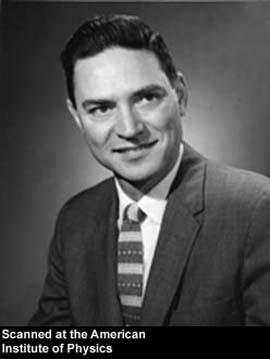
|
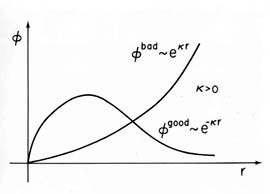
|
| Bootstrap wave functions are not necessarily localized. |
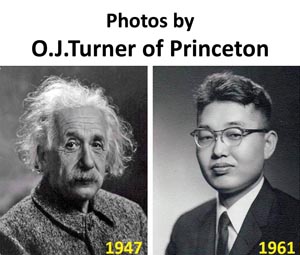
| |
|